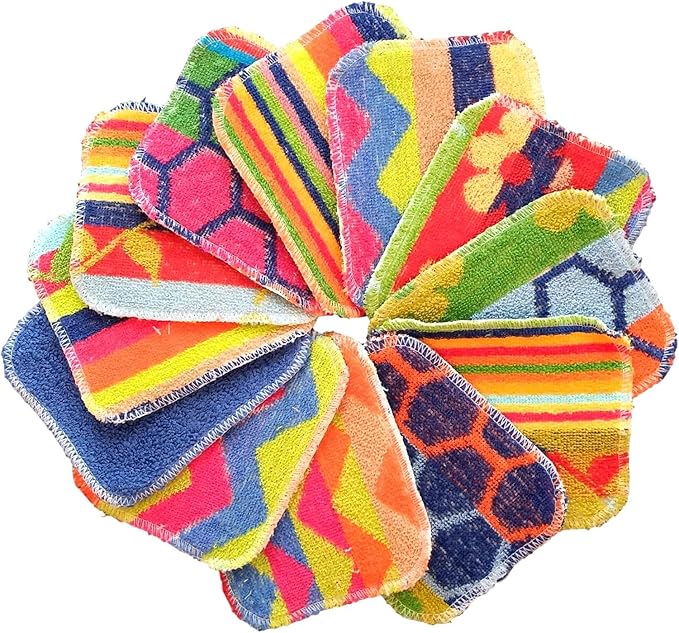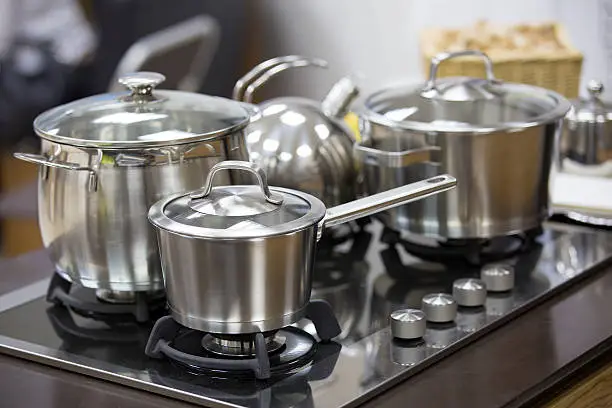This post contains affiliate links
Take a listen to the full episode HERE!
Key Takeaways: Essential Pots & Pans Tips for Home Cooks
- Always Preheat Your Pan: Get your pot or pan hot before adding oil, butter, or water. This technique is essential for preventing food from sticking and burning, and helps you use the correct amount of oil.
- Heat Control is the Key to Avoiding Burns: High heat is primarily for boiling water. Most cooking should happen at medium or medium-high heat. Commit to a temperature WHEN PREHEATING THE PAN instead of constantly dancing between high and low.
- You Don’t Need a 12-Piece Set: Invest in a few high-quality pieces (like All-Clad or a good cast iron pan) instead of a large, cheap set. You only need 4-5 core pieces. Keep reading 🙂
- Cast Iron Pans are Kitchen Heroes: They’re great for getting a deep, even sear on steak and for caramelizing vegetables. To maintain them, season with oil. Read on for our tips on how to season Cast Iron Pans.
- Fix a Burnt Pot with Salt and Simmering: Don’t soak! Add water and a generous sprinkle of salt to a burnt pot, bring to a simmer, and the burnt bits will loosen, making cleanup effortless.
Stop Burning Your Food: Essential Pans, Heat Control, & The Salt Trick
Amy’s Burn Report: The Challenge of Sticking Food
- The episode starts with Amy’s most common kitchen challenge: burning food to the bottom of the pan. This includes Campbell’s tomato soup, rice, risotto, eggs, and always pasta.
- This problem can stem from many factors, including low-quality pots, incorrect heat control, and multitasking. If you can not attend to what is on the stove turn the pan down lower to prevent your food from burning.
Pro-Tip #1: The Hidden Problem with Thin-Bottomed Pots
- Sometimes, the problem isn’t the cook, it’s the pot.
- A thin-bottomed pot on high heat will heat unevenly and quickly, leading less heat control, food sticking and burning, especially starchy foods like pasta.
- A quality stainless steel pan, when used correctly (always preheat the pan!), can provide nonstick results without the need for a nonstick coating.
Pro-Tip #2: Preheat Your Pan Before Adding Conductors
- Just like you preheat an oven or a barbecue, you must preheat your pots and pans.
- Get the pan hot first before adding a heat conductor (oil or butter). This is a foundational technique to prevent sticking and burning. There is no need to pre-heat a pan to boil water.
- Safety Note on Preheating: Be careful, especially with thin pans. If you preheat too long with oil, it can combust. If a grease fire starts, immediately cover it with a lid to snuff out the oxygen. Never add water!
Pro-Tip 3: Commit to the Heat when Pre-heating
- High heat is for boiling water only.
- The default for most cooking should be medium or medium-high heat.
- When a pan is too hot and you drop the temperature too low, you start to steam the food instead of searing or sautéing. Commit to a consistent heat when pre-heating and stop dancing between the settings.
- However, you are not committed to that heat the whole cook, you can turn it up or down slightly as needed during the cooking process.
Pro-Tip #4: The Salt and Simmer Trick for Burnt Pots
- Do not soak a burnt pot for 24 hours!
- The Professional Kitchen Solution: Sprinkle the burnt pot with salt (table salt works), then add water and let it simmer. The salt acts as an abrasive, and the simmering water loosens the burnt bits, making scrubbing simple.
Conquering Cast Iron: Seasoning, Cleaning, and Classic Dishes
Bringing the Cast Iron Pan Out of the Basement
- Cast iron is an inexpensive, durable, and highly effective cooking tool when used correctly.
- Seasoning is the process that creates a natural non-stick surface.
- How to Season: Heat the pan up, oil it well (especially when new), and heat it up again. The oil bakes onto the metal.
- The Salt Trick for Cleaning: Use the magic salt trick and an abrasive scrub to clean it. Avoid soap on true cast iron, as it can strip the seasoning (new-age cast iron may be an exception).
What to Cook in a Cast Iron Pan?
A cast iron pan is ideal for dishes that require deep, even heat and a professional sear:
- Steak: The pan provides an incredible, even crust on the entire surface.
- Pan-Roasted Vegetables: Heat the pan to medium/medium-high. Slice the vegetables and put them in without oil to get a dry, deep char (a “kiss” from the cast iron). Once caramelized, add kosher or sea salt and a splash of oil. The result is a tender-crisp vegetable with a beautiful char.
- Acidic Foods: Avoid cooking highly acidic foods like tomato or vinegar in true cast iron, as it can break down the seasoning.
Investing in Quality: The Essential Pots & Pans List
The 12-Piece Set Myth
- Many people receive large pot and pan sets as wedding gifts, but you do not need 11 or 12 pieces! (Especially when half the “pieces” are lids).
- A Better Approach: Take the budget for a large, cheap set (e.g., $500-1000) and use it to buy fewer, better quality pans. You will never have to buy them again.
The Chef Over Your Shoulder Essential List
You really only need four to five key pieces for everyday cooking:
- Egg Frying Pan: A smaller pan dedicated to things like eggs.
- Large Frying Pan/Skillet (12–14 inches): For sautéing, searing, and larger meals. (You rarely need a lid for this).
- The “Kraft Dinner” Pot (Small Saucepan): For small batches, boiling eggs, heating soup, etc. (Kirstie has a tiny All-Clad one she loves).
- Heavy Soup/Stew Pot: A high-quality, heavy-bottomed pot for sauces, chilis, stews, and your larger pasta batches.
- Optional: A dedicated Stock Pot for large-batch stock or specialized meals.
- Optional: A wok for the ultimate ‘wok hei’ or smokey flavour when making stir-fries such as our Chicken Cashew Stir-Fry.
Where to Buy Quality Individual Pans and Equipment to Maintain your pans for years.
All-Clad is a great, non-sponsored recommendation. They are high-quality, do not warp, and will last a lifetime. You can buy them online or, even better, at a professional kitchen supply store.

Le Creuset is widely considered the “Rolls Royce” of cast enamel cookware. They are extremely heavy-duty and are designed to be heirloom pieces that can be passed down through generations.
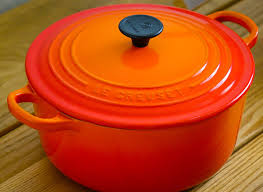
The mid-sized Pot with a lid: necessary for rice, small batch soups, sauces and pastas. We both own this one, and so far it still looks brand-new after 15 years:
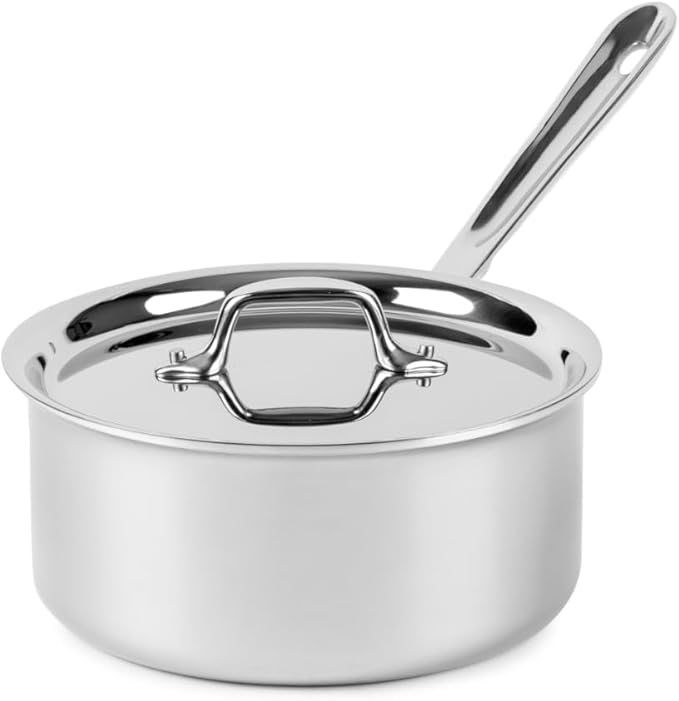
Lodge Cast Iron pans a great lineup of cast iron in all shapes and sizes. Perfect for searing meats to create beautiful pan sauces, or when you just don’t feel like firing up the bbq.
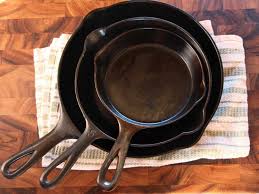
A Wok is Kirstie’s luxury item she loves. A carbon-steel wok is treated much in the same way as a cast-iron pan, you need to keep it seasoned.
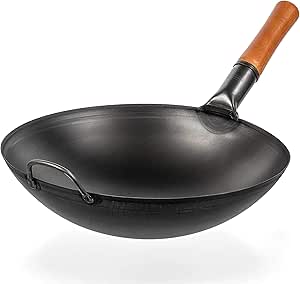
Bar Keepers Friend This non-abrasive cleaner keeps you stainless steel pans looking shiny and new.
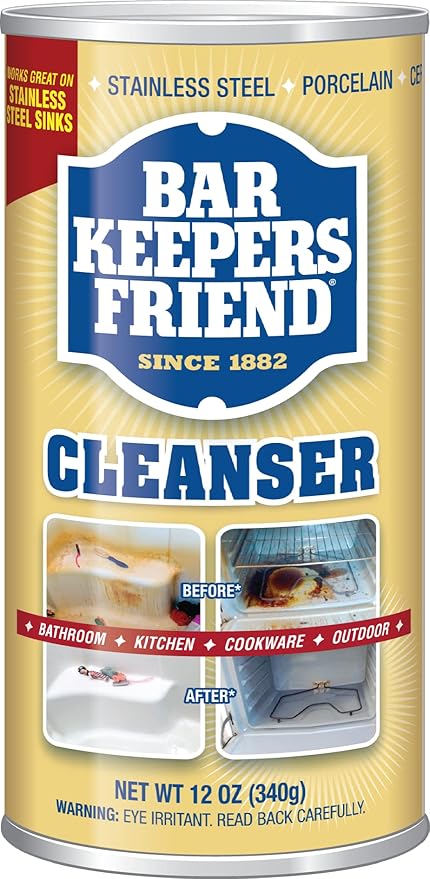
The World’s Best Scrubbie Another non-abrasive clean up hero. Seriously, it is the World’s Best Scrubbie!
